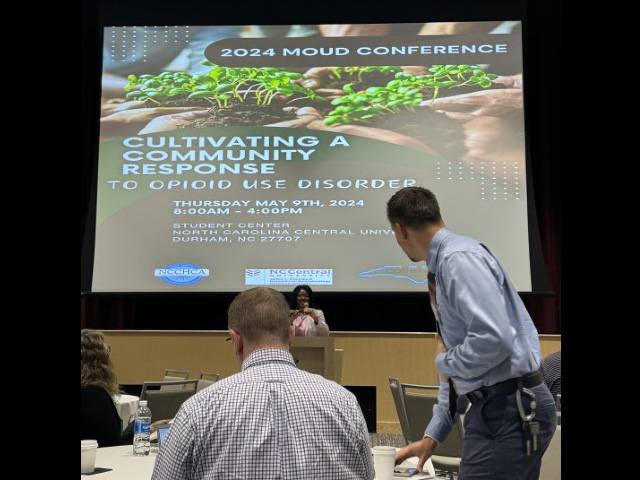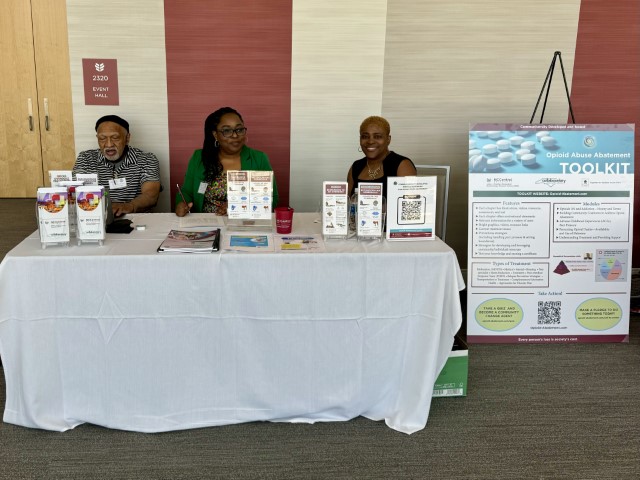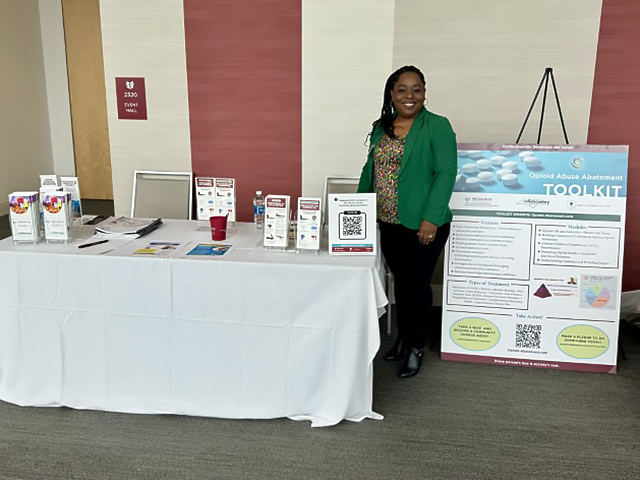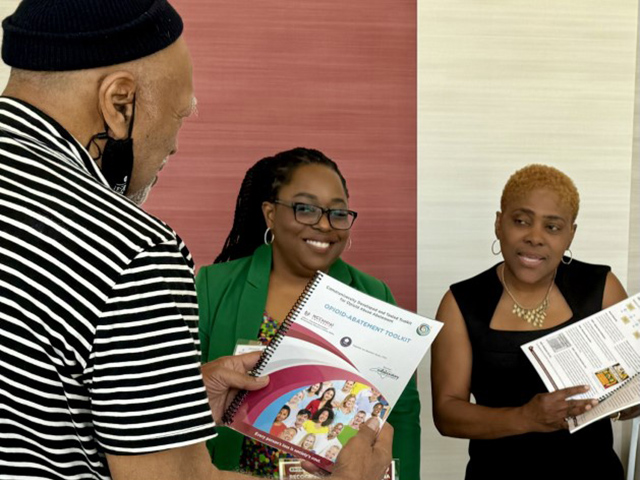Evaluation and Impact
2024 MOUD Conference — Culminating a Community Response
to Opioid Use Disorder, May 9, 2024. North Carolina Central University, NC.


Lead Principal Investigator, and Andrea Couch, Coordinator.





The toolkit includes five modules.
We recognize people around us are dying of opioids. We want to find a way to stop this waste of human life. The Opioid-Abatement Project is designed to develop a culturally appropriate interactive toolkit to stop opioid misuse. North Carolina Central University NCCU is partnering with Together for Resilient Youth (TRY) to develop and evaluate the effectiveness of a toolkit in educating Durham residents and those in other North Carolina counties about ways to reduce opioid misuse, overdose, and death. We need your input. Participants will rate the level of informational value or relevance, clarity, relatability, and the degree to which it reflects the community’s need, voice, and culture. The toolkit includes five modules. Current research will consist of two independent sub-studies — two focus groups:
- One with a professional in healthcare who lives or works in Durham and
- Another set of focus groups for the laypeople in the Durham community.
Research Summary
Theory
Community engagement is “a process of developing relationships that enable stakeholders to work together to address health-related issues and promote well-being to achieve positive health impact and outcomes” (WHO, 2020).
Purpose of the Study
- This study is being conducted to
- Develop a culturally appropriate interactive toolkit to support opioid misuse abatement in the Durham and the North Carolina area — especially among minority populations.
- Objectives of the Study:
- Obtain information about what factors help reduce opioid misuse to inform the development of a toolkit suited to the minority populations in the Durham area and North Carolina.
- Develop five modules with embedded interactive features, reflecting community needs, voice, and culture.
- Educate the public, based on findings, about prevention efforts to reduce opioid misuse, overdose, and deaths.
Summary of Methodology
Recruitment Strategies: Qualitative design using snowball sampling:
- Professional Focus Groups: The project’s consultant and research assistant recruited participants through word of mouth, phone calls, emails, and professional connections.
- Semi-structured interviews: The project’s consultant and research assistant recruited participants by word of mouth, phone calls, emails, and professional connections.
- Community Focus Groups: Community partners (TBA)
Toolkit Evaluations (12 Focus Groups):
- Two professional focus groups. There were thirteen professionals from ten local agencies. The professionals were all 18 years or older, fluent in English, lived or worked in Durham, knew about opioid addiction treatment, or were involved in other supportive roles. Groups lasted 90 minutes each.
- Ten community focus groups. There will be 60 – 96 participants for the category of the focus groups. The community members will be 18 years or older, fluent in English or Spanish, and live in Durham. The groups will last 30 minutes each.
- Semi-structured interviews: Participants: 15 individuals from 10 agencies participated in semi-structured interviews. They were all fluent in English, lived or worked in Durham, knew about opioid addiction treatment, or involved in other supportive roles. Each interview lasted about 60 minutes.
Analysis: A Qualitative Approach:
Content Analysis
Qualitative interviews provide complex descriptions of people’s experiences and lend themselves to in-depth exploration of the subject matter.
Results
The website and print volume have been created with input from several groups working together to determine what is important and how it can be presented to serve the people in our community best. North Carolina Central University, an HBCU, is represented by Dr. Dasherline Johnson, the Principal Investigator/Research Scientist at the Julius Chambers Biological and Biotechnical Institute and the principal researcher for the opioid abatement and recovery research program. TRY (Together for Resilient Youth) is represented by Dr. Wanda Boone.
After the initial development of the toolkit, feedback from community providers and leaders, and community members has been incorporated to refine the material further.
Results: Professional Toolkit
Toolkit Features
This toolkit will help you, your loved ones, and your community stay alive and thrive.
The five modules provide a wealth of material. Each module has objectives that list what we hope you can learn from it and questions to see if you did learn. This toolkit isn’t school, so before you begin the module, read the questions and answers to fix some of the ideas in your head. Then, read the module, think about it, and see how to apply it. When you’re done, take the test and see what you have learned. Go over the things you got wrong — knowing the answers can be the difference between life and death.
The Toolkit’s Core Modules
All chapters are dense; spend some time with each section in each module — look at the illustrations, videos, resources, assessment, and test.
- Opioids 101 and Addiction — History and Terms
This chapter is meant for everyone wanting to learn more about this epidemic and make an impact or a difference. It can be used by parents, children, and the general public. The last section shows how systemic racism and laws use Black and Brown people’s drug misuse as a trap to reinforce racism and disempower this community.
- Building Community Coalitions to Address Opioid-Abatement
This section is meant to be used by organizations within communities, local and state government agencies, families, and advocates to show how working together can reduce the impact of opioid problems. - Adverse Childhood Experiences (ACEs)
This section can be used by schools, communities, organizations, local and state government agencies, families, and advocates to show the importance of how investing and building healthy families and communities can reduce the impact of the opioid crisis. It is meant to educate everyone about ways to create a healthy society.
This module is quite dense; spend some time with each section in this module — look at the illustrations, videos, and resources. (Be sure you pay attention here — this chapter can give you a plan of action.)
- Preventing Opioid Deaths — Availability and Use of Naloxone
This module is tailored toward those in the throes of opioid addiction. It is critical to hospitals after discharge, those released from incarceration, and harm-reduction organizations. It is also important for the general public to know this life-saving information.
The modules contains vital information about differences in treatment and other critical material. Be sure you pay attention here. This module can give you a plan of action.
- Understanding Treatment and Providing Support
This section is meant to be used by everyone but tailored toward treatment centers, families, and individuals needing resources and at risk.
The module contains vital information about differences in treatment and other critical material. Be sure you pay attention here. This chapter can give you a plan of action.
We want this toolkit to provide you with useful material to help give you information and motivation to do what needs to be done. Embedded in the words are short videos to give you quick guidance. We also want your feedback on the parts of the toolkit that were especially useful and what other things you need in your community to stop the deaths from opioids, fentanyl, and other killers. You can make a difference. We hope this toolkit will help you on your path. We are members of your community, and want us and our families to be healthy and flourish.